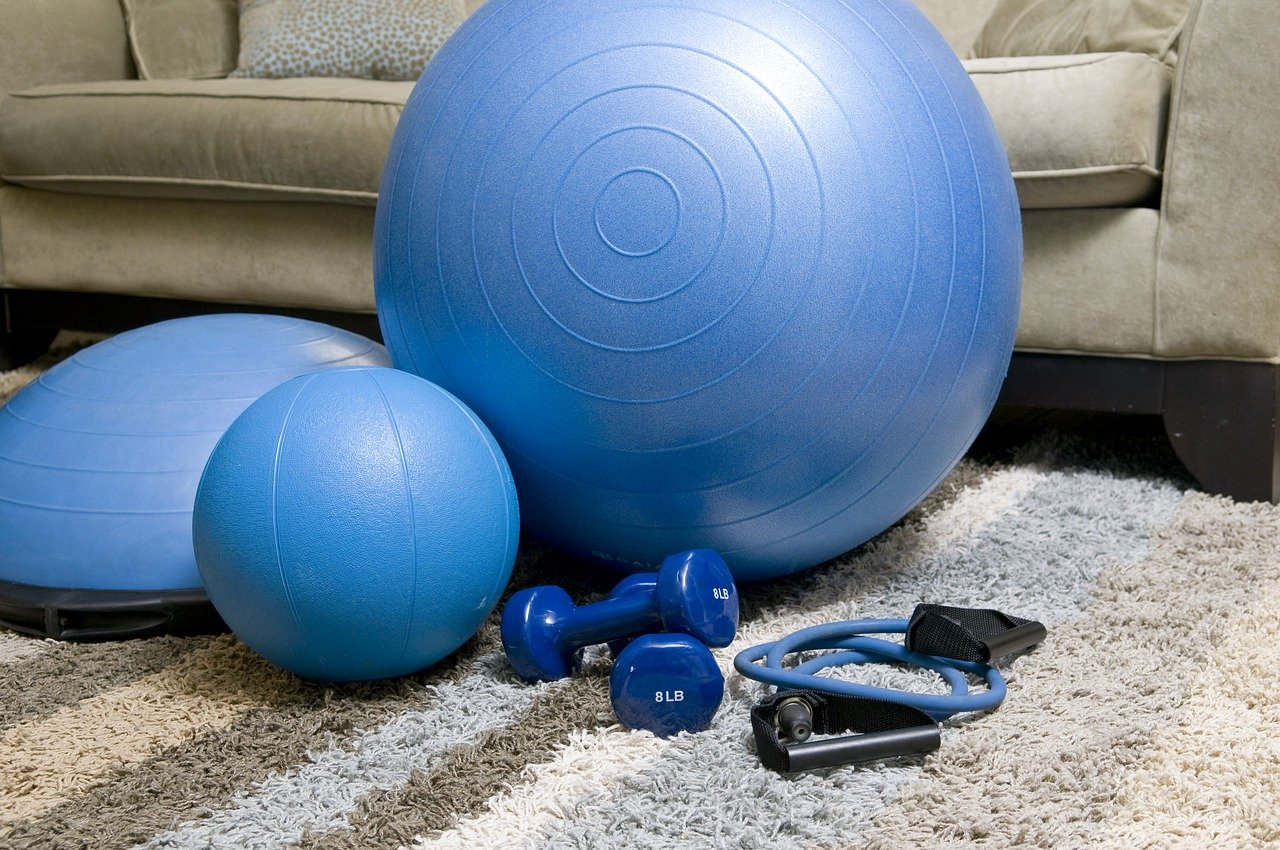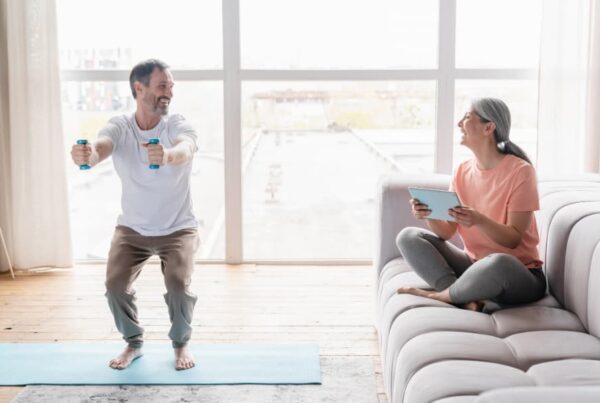Everyone follows their own routine and an important part of your routine should be exercise. You will have your own goals and time devoted to exercise each week, so it’s important to make sure you’re including important components of an exercise routine to improve your overall fitness.
One of the best tools to help you choose your exercise routine is to refer to the “F.I.T.T” principle. This stands for frequency, intensity, time and type.
F.I.T.T Principle
- Frequency is how many times per week you will exercise.
- Intensity is how hard you will exercise and depends on the type of exercise you choose.
- Time is how long you will exercise for and can depend on the type of workout you perform and your fitness level.
- Type is the simply the type of exercise you will perform and it’s important to change things up to prevent overuse, plateau’s or becoming bored.
Keep your goals in mind when choosing your exercise routine. There are many factors that can be changed in an exercise program, therefore, determining your goals will help focus your routine on reaching your goals.
7 Components of an Exercise Program to Improve Your Overall Fitness
- Strength Training
- Cardiovascular Endurance
- Mobility
- Stability
- Stretching
- Myofascial Release
- Rest
1. Strength Training
In my opinion, strength training is the most effective exercise type for physical results. This type of training includes performing a certain number of sets for an amount of desired repetitions. For example, performing a squat for 3 sets of 12-15 repetitions is a general idea of what this type of training entails.
There are different phases of strength training. The phases are: endurance (15+ reps), hypertrophy (10-15 reps), strength (6-10 reps) and power (3-6 reps). Depending on your goals you can select the proper phase you should focus on.
Choosing strength training to improve your overall fitness has many benefits including: increased bone density, improved joint health, increase in lean muscle mass and reduced risk of injury (there are many more).
You don’t have to lift heavy weights to increase your strength. First and foremost, you’ll want to make sure you have proper technique before lifting heavier weights. Start lighter and as you become more comfortable you can slowly increase the amount of weight you use.
Hint:
- For beginners: use lighter weights and perform more reps. Example: 2-3 sets of 15-20 repetitions.
- For muscle growth: perform more sets with a lower repetition range. Example: 4 sets of 10 repetitions.
- For strength: perform high sets with a low repetition range. Example: 5 sets of 3-5 repetitions.
Strength training workouts, on average, are performed 2-3 times per week. Depending on your workout splits (fully body, upper body, lower body), this type of workout shouldn’t be performed on back-to-back days.
2. Cardiovascular Endurance
To strengthen your heart, increase lung capacity, improve blood flow and reduce your risk of cardiovascular disease, you should be adding cardiovascular endurance to your exercise routine. There is a lot of flexibility with this type of training which makes it more convenient to include into your schedule, and it’s a great excuse to get outside.
On average, you should be performing 3-4 or more “cardio” sessions per week. That is based on 30 minutes of medium intensity activity. An example is performing a 30 minute fast walk or jog outside. If you decide to do high intensity sessions, you would decrease your frequency to approximately 2-3 sessions per week.
The Different Intensities for “Cardio”
- Low-intensity, long duration (easy walk for 45 minutes plus)
- Medium-intensity, medium duration (fast walk outside or a steady jog)
- High-intensity, short duration (High intensity interval training (HIIT) or sprints)
Hint: Try mixing up your intensities of “cardio” to train different energy systems and keep your routine fun and interesting.
If you experience back, hip, knee or ankle pain, try using a stationary cardio machine first. This will help keep your joints safe and prevent unnecessary inflammation. Your exercise routine should always be safe and have a positive effect on your body.
3. Mobility
One of the best feelings during movement is the ability to move pain-free or without restrictions. Your mobility is a key factor to improve your overall fitness by allowing your joints to move freely.
When exercising, make notes of body parts that bother you and focus on repairing them. This may require you to find professional help to guide you or it may be, hopefully, a simple fix. One of the key benefits of a proper exercise routine is the ability to repair the body and reduce pain in your body parts.
Tip: try performing a bodyweight exercise and focus on your range of motion (ROM). You should be able to do the movement with minimal restriction. If you feel “stuck” or have a lot of restriction, then you’ll need to resolve the issue before moving forward to prevent any potential injury.
4. Stability
Stability and mobility go hand-in-hand. Without both of them your body has a higher risk of injury. Your muscles and bones provide the dynamic and static posture, where the muscles contribute to the stability and mobility of your skeletal structure. To simplify this, think about your balance and ask yourself: “Am I stable or all over the place?”. This will reflect on your core strength, and I’m not specifically referring to your “abs” here.
Your core strength is the ability of muscles to contract in uniform to provide support for any movement you perform. One of the best ways to test your stability and core strength is a balance test. For instance, if you can’t hold a position such as balancing on one foot, this is a sign that you may want to focus on improving your stability.
Tip: for injury prevention and proper technique during exercise, you want to have good stability and mobility. If you’re someone who has tremendous mobility, does your stability match it? On the other hand, if you have great stability make sure your mobility isn’t lacking.
5. Stretching
The easiest yet most over-looked part of an exercise routine. Stretching can help unlock your tight areas by stretching the muscle fibres in addition to relaxing your central nervous system after a stressful day or a hard workout.
For instance, the majority of the population has a sit-down job which translates into a sit-down posture. Stretching your chest area to prevent headaches from your “rounded” posture through the upper body and stretching your hip flexors to help decrease lower-back pain are some examples.
Tips for Stretching
- Start by choosing 2-3 stretches and hold for 30 seconds each.
- Progress by holding the stretch for 45 seconds- 60 seconds and add one more stretch to your routine.
- Progress by adding full-body stretches or trying “PNF” stretching (proprioceptive neuromuscular facilitation). If you have questions, please use the comment box below this article.
Fact: static stretching improves lean muscle mass in addition to strength and cardio training.
It’s recommended to stretch 4-7 times per week. To start, try aiming for 4 per week and you can add it at the end of any workout. Don’t perform static stretches before exercise.
6. Myofascial Release
The current and most common myofascial release technique is the foam roller. Performing foam rolling before and after workouts is a great way to keep your connective tissue healthy.
The best way to think of your fascia is to be mindful of “knots” in your body which cause deferred discomfort or pain. For example, if you have sprained your ankle, the fascia in your lower leg, ankle and foot has been affected. Therefore, the sprained ankle can be causing plantar fasciitis, shin splints or even knee/ hip pain.
To release these “knots” in your fascia, you can perform foam rolling techniques or use a firm ball for more specific areas. In addition, you can simply use the touch of your finger on a “knot” to help release it.
As research continues, the health industry is becoming more educated on fascia and the role it plays in the body. More importantly, we are learning how fascia connects body parts and how pain we experience can be connected to a previous trauma to the body.
7. Rest
As important as daily exercise is, it’s even more important to give your body appropriate rest. Try to give yourself at least one full day of rest during the week and, as a result, your body won’t “burn-out” or be over-trained.
Rest can also refer to your sleep. Try to aim for 7-9 hours of sleep each night to allow your body to recover and replenish. If you’re not sleeping enough your body will not recover properly which won’t allow you to improve your overall fitness.
Conclusion
The above components of an exercise routine will help improve your overall fitness. Keep in mind your goals and have a good balance between each type of exercise.
To start your exercise routine try to schedule 30 minutes of exercise each day. You’ll see results and reach your goals!






